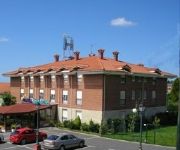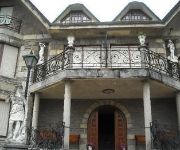Facts and Data
Webpages:
Official Unesco Page
World Heritage Sites in Spain (Tourist Office of Spain)
Basis Data:
Unesco World heritage since: 1985
Size of heritage:
- Buffer zone: 2,235 ha
Coordinates:
Longitude: -3,884°
Latitude: 43,383°
Summary
Seventeen decorated caves of the Paleolithic age were inscribed as an extension to the Altamira Cave, inscribed in 1985. The property will now appear on the List as Cave of Altamira and Paleolithic Cave Art of Northern Spain. The property represents the apogee of Paleolithic cave art that developed across Europe, from the Urals to the Iberian Peninusula, from 35,000 to 11,000 BC. Because of their deep galleries, isolated from external climatic influences, these caves are particularly well preserved. The caves are inscribed as masterpieces of creative genius and as the humanity’s earliest accomplished art. They are also inscribed as exceptional testimonies to a cultural tradition and as outstanding illustrations of a significant stage in human history.
Location on Map
Show bigger map on Openstreetmap
Introduction
The Cave of Altamira and Paleolithic Cave Art of Northern Spain, located in Santillana del Mar, Cantabria, Spain, is a UNESCO World Heritage site of immense historical and cultural significance. This site is renowned for its exceptional collection of prehistoric cave paintings, which provide invaluable insights into the lives and artistic expressions of our ancient ancestors.History
The history of the Cave of Altamira dates back to the Upper Paleolithic period, approximately 36,000 years ago. It was discovered in 1868 by a local hunter, Modesto Cubillas, and his daughter, Maria. However, it was not until the early 20th century that the significance of the cave's artwork was fully recognized. The cave's paintings, created using natural pigments and depicting animals, human figures, and abstract symbols, are considered masterpieces of prehistoric art. They showcase the remarkable artistic skills and creativity of our early ancestors. The discovery of Altamira revolutionized our understanding of prehistoric art and challenged the prevailing belief that early humans were incapable of such sophisticated artistic expression.Current State
Today, the Cave of Altamira is closed to the general public to preserve its delicate environment and protect the invaluable artwork from deterioration. However, a replica cave, known as the Altamira Museum, has been created nearby to allow visitors to experience the magnificence of the original cave art. The Altamira Museum, inaugurated in 2001, offers a faithful reproduction of the cave's interior, including its intricate paintings. The replica cave provides an immersive experience, allowing visitors to appreciate the artistry and skill of our ancient ancestors up close. The museum also features informative exhibits that delve into the history, techniques, and significance of the cave art. The decision to close the original cave to the public was made to prevent further damage caused by the presence of visitors. The delicate balance of temperature, humidity, and air quality within the cave is crucial for the preservation of the artwork. By limiting access, conservation efforts can be focused on maintaining the integrity of the paintings for future generations. While the replica cave provides an excellent opportunity for visitors to engage with the art, it is important to note that it cannot fully replicate the awe-inspiring experience of standing in the presence of the original cave art. Nonetheless, the Altamira Museum ensures that the legacy of the Cave of Altamira and its Paleolithic Cave Art is accessible to all who wish to explore and appreciate this remarkable UNESCO World Heritage site. In conclusion, the Cave of Altamira and Paleolithic Cave Art of Northern Spain is a testament to the artistic achievements of our ancient ancestors. Although the original cave is closed to the public, the Altamira Museum offers a faithful reproduction that allows visitors to immerse themselves in the beauty and significance of this extraordinary prehistoric art. The preservation of this UNESCO World Heritage site ensures that future generations can continue to marvel at the ingenuity and creativity of our early human ancestors.Hotels and places to stay
San Juan
Sercotel Los Angeles
Camargo
Hotel Nueva Plaza
Hospedaje Golf
Las Anclas
Hostal Golf
Hotel Antoyana
Hospederia Villaescusa
SAN MILLAN
Videos from the area
Videos provided by Youtube are under the copyright of their owners.















